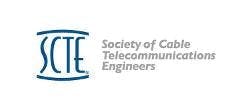The SCTE will partner with Villanova University's RISE Forum to develop a headend and hub energy assessment tool targeted at critical facilities managers, technology business leaders and other executives in the cable industry.
The energy assessment tool is intended to provide a new methodology for managing power consumption, with a specific focus on improving energy efficiency in the industry's headend, hub and network edge facilities. The ultimate goal is to help the industry meet the ambitious energy reduction targets established through SCTE's Energy 2020 Program, which is intended to achieve double-digit reductions in energy cost and consumption by the end of the decade.
Cable's edge facilities traditionally have been in an "always-on" state regardless of demand. Beyond reducing energy footprints and optimizing performance, the energy management tool aims to enhance the overall resiliency of these customer-facing buildings.
"Between 73% and 83% of cable's overall energy consumption is by hubs, headends and the access network power supplies, powering the active equipment in the HFC network," said Chris Bastian, senior vice president and CTO of SCTE/ISBE. "The Villanova RISE Forum will complement other efforts to tackle that challenge, including the development of standards that are enabling cable system operators to identify consumption patterns more effectively."
SCTE/ISBE is a member of Villanova's RISE (Resilient Innovation through Sustainable Engineering) Forum, a membership-based network that works to identify and apply data-driven solutions to help its members increase the sustainability of their respective organizations and secure a competitive advantage in the marketplace. The graduate student team overseeing the project plans to present preliminary findings to representatives from the cable industry at the Energy 2020/EMS Plenary on Oct. 18 at CableLabs in Louisville, CO.
